Yorkshire Museum
 | |
| Established | 1830 |
|---|---|
| Location | Museum Gardens, York, England |
| Coordinates | 53°57′42″N 1°05′15″W / 53.9618°N 1.0875°W |
| Type | Archaeological and Natural Sciences Museum |
| Visitors | 163,805 (2018–2019)[1] |
| Director | Reyahn King, York Museums Trust |
| Website | www.yorkshiremuseum.org.uk |
The Yorkshire Museum is a museum in York, England. It was opened in 1830, and has five permanent collections, covering biology, geology, archaeology, numismatics and astronomy.
History

The museum was founded by the Yorkshire Philosophical Society to accommodate their geological and archaeological collections, and was originally housed in Ousegate, York, until the site became too small. In 1828, the society received by royal grant, 10 acres (0.040 km2) of land formerly belonging to St Mary's Abbey for the purposes of building a new museum. The main building of the museum is called the Yorkshire Museum; it was designed by William Wilkins in a Greek Revival style and is a Grade I listed building. It was officially opened in February 1830, which makes it one of the longest established museums in England. A condition of the royal grant was that the land surrounding the museum building should be a botanic gardens and one was created in the 1830s. The botanic gardens are now known as the Museum Gardens. On 26 September 1831, the inaugural meeting of the British Association for the Advancement of Science was held at the Yorkshire Museum.[2]
The Tempest Anderson Hall was built in 1912, as an annex to the museum, and is an early example of a reinforced concrete building. It is used as a conference venue and lecture theatre.
The Museum was narrowly missed by a bomb during the Baedeker Blitz on 29 April 1942, though the explosion caused damage to the roof and the windows. The Curator, Reginald Wagstaffe, lived in Manor Cottage (a building adjacent to the museum) and was responsible for the subsequent clean up effort of the debris, during which 'seven large bath-tubs' of broken glass and geological specimens were thrown away.[3]
In light of financial issues from 1956 onwards, the YPS transferred the Yorkshire Museum and Museum Gardens to 'the citizens of York' on 2 January 1961. A plaque on the front of the Yorkshire Museum records this event.[4] The City of York Council set up the York Museums Trust in 2002, to manage the York Castle Museum, York Art Gallery, the Yorkshire Museum and the Museum Gardens.[5][6]
The museum closed in November 2009 for a major refurbishment and reopened on Yorkshire Day on 1 August 2010. The £2 million scheme was largely carried out by the museum's own staff, who restructured and redecorated the interior of the building.[7]
As of 2018, the museum has the following permanent exhibits: "Roman York – Meet the People of the Empire", "Medieval York: Capital of the North", "Yorkshire's Jurassic World", "After the Ice: Yorkshire’s Prehistoric People", and "William Smith: The Map That Changed The World".[8]
During the COVID-19 pandemic the Museum, along with the other York Museums Trust sites, closed to the public on 23 March 2020.[9]
Collections
The four permanent collections at the museum all have English designated collection status, which means they are "pre-eminent collections of national and international importance".[10] The collection began in the 1820s, with the collection of animal bones and fossils from Kirkdale Cave.[11]
Biology
The biology collection contains 200,000 specimens, including both fauna and flora, with the majority of the collection made up of insects. There are two stuffed specimens of the extinct great auk, an almost complete skeleton of an extinct moa, and a large collection of specimens from the Yorkshire region including the remains of elephants, cave bears and hyena from Kirkdale Cave dated to the Quaternary period, around 125,000 years. In 1866-7, the museum was one of the three recipients of Dodo bones discovered by Harry Higginson.[12]
Geology
The geology collection contains over 112,500 specimens of rocks, minerals and fossils. Fossils make up the majority of the collection numbering over 100,000 samples, and include important specimens from the Carboniferous, Mesozoic and Tertiary periods.
Astronomy

The astronomy collection is mainly kept in the observatory in the museum gardens with some telescopes kept at the Castle Museum in York.[13] The observatory is staffed by volunteers.[14]
Archaeology

The archaeology collection has close to a million objects that date from around 500,000 BC to the 20th century. Most of the objects from the Roman, Anglo Scandinavian and Medieval periods are from the York and Yorkshire area. Following the 2010 refit of the museum, the first gallery displayed parts of the Roman collection, focusing on objects from Eboracum (Roman York). A statue of the Roman God Mars is prominently displayed, and there is an interactive display describing the lives of some of the Romans whose remains have been found in York.[15] The final record of the famous lost Roman legion, the Ninth Legion, is on display as part of the Roman gallery. The stone inscription, which has been dated to Trajan's twelfth year as emperor, between 10 December 107 and 9 December 108, commemorates the legion's rebuilding in stone of the south-eastern wall of Eboracum's legionary fortress.[16] The BBC reports that "Experts have described it the finest example of Romano British inscription in existence".[16]
The museum houses some collections of forged prehistoric tools by the Yorkshire forger, Flint Jack.
Notable collections
Geological
Prehistoric
- The Star Carr Pendant, the oldest Mesolithic art in Britain.[17]
- The Towton torcs, a pair of gold Iron Age torcs.
Roman
- The Wold Newton hoard, a hoard of 1,857 coins dating from the early 4th century AD.
- The Head of Constantine the Great, a fragment of a marble statue of the Roman Emperor Constantine the Great.
- The Statue of Mars, a 4th-century sculpture of the Roman god Mars.
- The Heslington Hoard, a hoard of 2,800 coins dating from the mid 4th century AD.
- The Ivory Bangle Lady, a 4th-century skeleton of a woman.
- The Overton Hoard of silver denarii from the early 3rd century.
- The Knaresborough hoard of copper alloy vessels from the 4th century.
Early Medieval
- The Coppergate Helmet, an 8th-century helmet found in York.
- The Ormside Bowl, a silver-gilt bowl from Cumbria.
- The Bedale Hoard, a hoard of Viking silver jewellery and an Anglo-Saxon sword.[18]
- The Escrick ring, an Anglo-Saxon gold and sapphire finger ring.
- The Gilling sword, a late Anglo-Saxon sword found in a river.
- The Vale of York hoard, a 10th-century niello silver-gilt vessel containing coins and jewellery.[19][20][21]
Medieval
- The Middleham Jewel, a gold, diamond-shaped pendant set with a sapphire and engraved with a picture of the Christian Trinity on the front, and one of the Nativity of Jesus on the back.[22][23][24]
- The Cawood sword.[25]
- The Medieval Shrine of Saint William of York.[26]
- A gilt-enamel figurine depicting Christ, produced in Limoges enamel, which was discovered in 1826 and subsequently lost, was purchased by the Museum in 2019. It first went on public display on 20 September 2019.[27]
- Objects from the archaeology collection
-
Bun of Roman hair from the late third to early fourth century
-
Ormside bowl
-
The front of the Middleham Jewel showing the Crucifixion of Jesus
-
The 8th century Coppergate Helmet
-
The 9th century Gilling sword with silver decorated handle
-
Carved Medieval Boss from St Mary's Abbey
-
Marble bust of the Roman Emperor Constantine the Great
-
The Bedale Hoard of Viking silver and gold
Events
The museum has 'Finds Days' in the main Yorkshire Museum building where members of the national British Portable Antiquities Scheme and museum staff will identify objects brought to them by members of the public. The information is also recorded to help build up a more complete archaeological picture of the past.[28]
A monthly lecture series by the Yorkshire Philosophical Society is held in the Museum's lecture theatre.[29]
Roman Festival
The Museum and the Museum Gardens first hosted the Eboracum Roman Festival in 2016.[30] It has since become an annual event.[31][32][33]
Curator battle
During the COVID-19 pandemic the museum was closed. It hosted a series of weekly competitions on social media to engage with other museums in order to find the best object of a given topic, titled the 'Curator battle'. Themes have included searches to find the 'creepiest object' and the 'sassiest object' in museum collections worldwide.[34][35]
Exhibitions

The museum has hosted many exhibitions since its inception.
1950s
In 1954 temporary exhibitions were held on photographs of the royal tombs at Westminster and York silver.[36]
1970s
The 1976 exhibition "The Viking Kingdom of York" was seen by over 78,000 visitors.[3]
1980s
The Coppergate helmet was first put onto display in a permanent gallery space in 1980 following a £30,000 grant from the British Museum as part of the "International Viking Exhibition".[3]
A third successful Viking exhibition, "The Vikings in England" was opened by the Prince of Wales on 30 March 1982 and was seen by over 235,000 visitors before it closed in October of the same year. This exhibition was awarded the European Museum of the Year Special Exhibition Award as a result of the presentation of the exhibition in the Museum and for additional educational projects organised by the then Keeper Elizabeth Hartley.[3]
The 1984 exhibition "A New Look at the Dinosaurs" was opened by David Bellamy and was seen by over 320,000 visitors.[37] It was described in a review in New Scientist as "the best thing on dinosaurs you are ever likely to see".[38]
The 1985 exhibition "Disappearing Forest Wildlife" was opened on 22 May 1985, again by David Bellamy. It featured a replica jungle setting and a vivarium containing live spiders, snakes and scorpions.[39]
2000s
A 2001 exhibition, held between April 6 and September 26, was titled "Alcuin & Charlemagne: The Golden Age of York".[40] It was the final one in a series of exhibitions throughout Europe titled "Charlemagne: The Making of Europe", with other venues in Paderborn, Barcelona, Brescia, and Split.[41]
The 2006 exhibition Constantine the Great: York's Roman Emperor was described as "the most important archaeological-historical loan exhibition to have been held in a provincial British museum".[42] It attracted over 58,000 visitors.[43]
2010s
The museum closed in November 2009 for a major refurbishment and reopened on Yorkshire Day on 1 August 2010.[7]
The facial reconstruction of King Richard III was displayed in the museum from July–October 2013 as part of a national tour.[44]
A Shakespearean First Folio was on display in the Medieval gallery in 2014.[45]
In 2015 the museum first displayed the oldest Sauropod fossil from the Yorkshire coast, nicknamed 'Alan the Dinosaur'.[46]
In 2016 a recently discovered, unique Mesolithic pendant from Star Carr first went on public display.[47]
In 2017 the Museum hosted the first stage of a touring exhibition titled 'Viking: Rediscover the Legend', opened by Alice Roberts.[48] The exhibition was co-curated by the British Museum and subsequently travelled to the Atkinson Art Gallery and Library in Southport, Aberdeen Art Gallery, Norwich Castle Museum, and the University of Nottingham.[49][50] The exhibition was awarded the 'Excellence in Media Arts' award at the 2017 York Culture Awards.[51]
In April 2018, Yorkshire's Jurassic World exhibition, including marine and land fossils from Yorkshire and elsewhere, was opened by David Attenborough.[52][53] The exhibition, like the Viking exhibition the previous year, was also awarded the 'Excellence in Media Arts' awards at the 2018 York Culture Awards.[54]
On 21 September 2019 the St Mary's Abbey Figurine first went on public display. It is a medieval gilt-copper alloy, Limoges enamel figurine found in St Mary's Abbey, York in 1826 and acquired in 2019 from a purchase at auction.[55][56] During this update to the exhibition, the Fulford ring was first put on display.[57]
In November 2019, the Museum announced that a portrait of Richard III of England will be on loan from the National Portrait Gallery in summer 2020. The exhibition has been funded by a grant of £17,625 from the Weston Loan Programme and Art Fund.[58]
Keepers and Curators
The museum has had many keepers, curators and honorary curators over its lifetime.
| Name | Title | Dates in Post | Image |
|---|---|---|---|
| John Phillips | Keeper | 1826–1844 | 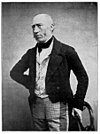
|
| Henry Baines | Sub-Curator | 1829–1870 | 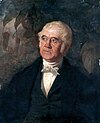
|
| William Hincks | Curator of Botany | 1827–1838 | 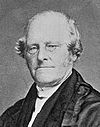
|
| Charles Wellbeloved | Honorary Curator of Antiquities | 1823-1858 | 
|
| Thomas Allis | Honorary Curator of Ornithology Honorary Curator of Comparative Anatomy |
1835-1839 1839-1875 |
|
| Edward Charlesworth | Keeper | 1844–1858 | |
| William Dallas | Keeper | 1858–1868 | |
| Charles Wakefield | Keeper, Honorary Curator of Numismatics | 1870–1878 | |
| Rev Canon James Raine | Honorary Curator of Antiquities | 1873-1896 | 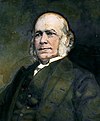
|
| John-Clay Purves | Keeper | 1878–1880 | |
| Walter Keeping | Keeper | 1880–1883 | |
| Henry Maurice Platnauer | Keeper | 1883–1904 | |
| Oxley Grabham | Keeper | 1904–1919 | 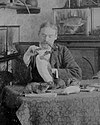
|
| Walter Harvey Brook | Honorary Curator of Medieval Architecture | Early 20th Century | |
| William Herbert St Quintin | Honorary Curator of Zoology | 1922-1931 | |
| Walter Edward Collinge | Keeper | 1921–1940 | |
| Reginald Wagstaffe | Keeper | 1940–1950 | |
| Mary Kitson Clark | Honorary Curator of Roman Antiquities | 1941–1943 | |
| George Willmot | Keeper | 1950–1970 | 
|
| Colin Simms | Keeper of Biology | 1964-1982 | |
| Barbara Pyrah | Keeper of Geology | 1968–1988 | |
| Allen Butterworth | Keeper | 1970–1974 | |
| Elizabeth Hartley | Keeper of Archaeology | 1971–2007 | 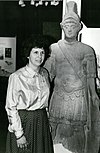
|
| Michael Clegg | Curator | 1974–1982 | |
| Paul Howard | Keeper of Biology | 1980s-1990s | |
| Terence Suthers | Curator, Director[59] | 1983–1987 | |
| Janetta Lambert | Keeper of Biology | c.1984 | |
| Melinda Mays | Numismatist | 1984-? | |
| Brian Hayton | Curator (latterly County Museums Officer) | 1987–? | |
| Paul Ensom | Keeper of Geology | 1988-1998 | |
| Andrew Morrison | Curator of Archaeology Head of Collections |
2006-2014 | |
| Camilla Nichol | Curator of Geology | Around 2007 | |
| Isla Gladstone | Curator of Natural Sciences | ?-2013 | |
| Natalie Buy | Curator of Archaeology | 2014-2017 | |
| Andrew Woods | Curator of Numismatics Senior Curator |
2013-2017 (as Curator of Numismatics) 2017–present (as Senior Curator) |
|
| Janet Barnes | CEO of York Museums Trust | 2002–2015 | |
| Mary Kershaw | Director of Collections for York Museums Trust | 2003-2009 | |
| Reyahn King | CEO of York Museums Trust | 2015– |
The Yorkshire Museum Ghost
A series of reportedly paranormal events were recorded in the Museum in the winter of 1953 and the early months of 1954. In a 1958 report of the events, the museum's caretaker George Jonas reported to have seen the ghost of a man in Edwardian dress entering the Museum's library and that a book repeatedly drew itself from its shelf and fell to the floor on several occasions. A disagreement between the curator George Willmot and the head of the Yorkshire Philosophical Society, H. E. Harrowell, over the scepticism of the latter led to the resignation of Mr. Willmot. The phenomenon of the falling book was reportedly witnessed several times, always on a Sunday evening. On 27 January 1954, eight people entered the museum library to witness the event and signed witness statements recounting their experiences; these included a feeling of cold around the legs, the book removing itself from the shelf, and the leaves of the book still moving whilst it was on the floor.[60][61]
References
- ^ Trustees Reports and Financial Statements, Year Ended 31 March 2019 (PDF) (Report). York Museums Trust. 2019. Retrieved 29 October 2019.
- ^ Willis, Ronald (1988). The illustrated portrait of York (4th ed.). Robert Hale Limited. p. 176. ISBN 0-7090-3468-7.
- ^ a b c d Pyrah, B. J. (1988). "A Modern Museum (1970–1988)". The history of the Yorkshire Museum and its geological collections. North Yorkshire County Council. pp. 134–148. ISBN 1850720428.
- ^ "Yorkshire Museum and Gardens". York Civic Trust. Retrieved 11 October 2019.
- ^ "Yorkshire Philosophical Society history". Yorkshire Philosophical Society. Retrieved 31 December 2014.
- ^ "York Museum Gardens". York Museums Trust. Retrieved 31 December 2014.
- ^ a b Miller, B. (30 July 2010). "Face to face with the new-look Yorkshire Museum". Culture24. Retrieved 31 October 2018.
- ^ "Exhibitions". Yorkshire Museum website. York Museums Trust. Retrieved 31 October 2018.
- ^ "YMT ATTRACTIONS ARE CURRENTLY CLOSED IN LINE WITH THE GOVERNMENT ADVICE ON CORONAVIRUS". York Museums Trust. Retrieved 10 June 2020.
- ^ "MLA Programmes designation". The Museums, Libraries and Archives Council. 2007. Archived from the original on 22 August 2007. Retrieved 4 September 2007.
- ^ Pearce, Susan M. (1996). Exploring science in museums. Continuum International Publishing Group. pp. 35–39. ISBN 978-0-485-90006-4.
- ^ Brown, Clare M. (2020). "Harry Pasley Higginson and his role in the re-discovery of the dodo (Raphus cucullatus)". Archives of Natural History. 47 (2): 381–391. doi:10.3366/anh.2020.0662.
- ^ "Biology". "Geology". and "Astronomy". York Museums Trust. 2006. Retrieved 8 September 2007.
- ^ Ashworth, Ian. "Observatory volunteers". Archived from the original on 3 November 2014. Retrieved 3 November 2014.
- ^ Morrison, Andrew (25 October 2010). "The Yorkshire Museum Refit: Did it "Let the Light In"?". The University of York. Retrieved 2 March 2012.
- ^ a b "Yorkshire Museum marks 'lost' Roman legion". BBC. 29 March 2011. Retrieved 2 March 2012.
- ^ "Yorkshire Stone Age pendant goes on display". BBC News Online. 26 February 2016. Retrieved 16 February 2018.
- ^ Laycock, Mike (13 December 2014). "Bedale Hoard back on display at Yorkshire Museum". York Press. Retrieved 7 February 2017.
- ^ Timpson, Trevor (17 September 2009). "BBC News Channel". Getting the most out of treasure. Retrieved 20 September 2009.
- ^ "Viking Hoard". Yorkshire Museum. 1 September 2009. Retrieved 20 September 2009.
- ^ Pantry, Lyndsey (2 July 2015). "'Once in a lifetime' Viking hoard back on display". Yorkshire Post. Leeds. Retrieved 21 January 2016.
- ^ "The Middleham Jewel". The Art Fund. Retrieved 13 October 2007.
- ^ "Archaeology". York Museums Trust. 2006. Retrieved 24 June 2007.
- ^ Cherry, John (1994). The Middleham Jewel and Ring. The Yorkshire Museum. pp. 4 and 24–26. ISBN 0-905807-12-X.
- ^ Lewis, Haydn (18 December 2007). "Return of the Viking sword". York Press. Retrieved 7 February 2017.
- ^ Harris, Richard (8 June 2010). "St William of York shrines on display for first time in 400 years". York Press. Retrieved 7 February 2017.
- ^ "Rare 800-year-old figure of Christ returned to York". BBC News. 20 September 2019.
- ^ "YMT: Portable Antiquities Scheme". York Museums Trust. Retrieved 16 February 2018.
- ^ "YPS Lectures". Yorkshire Philosophical Society. Retrieved 31 October 2018.
- ^ "Romans return to streets of York in city festival". York Press. 5 June 2016.
- ^ Alex Ross (5 June 2017). "Romans conquer at York festival". York Press.
- ^ Chloe Laversuch (23 May 2018). "Eboracum Roman Festival to bring city's history to life". York Press.
- ^ Vicky Thompson (30 May 2019). "Legions to invade as Eboracum Roman Festival returns to York". York Press.
- ^ "Yorkshire Museum: Curator battle seeks 'creepiest exhibit'". BBC News. 21 April 2020.
- ^ Kelly McCarthy (24 April 2020). "Museums share 'sassiest objects' for an epic curator battle on social media". ABC News.
- ^ "Report of the Council of the Yorkshire Philosophical Society for 1954". Transactions of the Yorkshire Philosophical Society: 2–3. 1955.
- ^ Terence Suthers (1985). "The Yorkshire Museum, 1984". Annual Report of the Yorkshire Philosophical Society: 29–37.
- ^ Beverly Halstead (5 April 1984). "Dinosaurs are to be enjoyed". New Scientist. 1404: 28.
- ^ Howard, Paul (1986). "The Yorkshire Museum in 1985: Biology". Proceedings of the Yorkshire Philosophical Society: 31–32.
- ^ "Elizabeth Grayson Hartley (1947 – 2018)". Her Story York. Retrieved 26 June 2019.
- ^ Garrison, M.; Nelson, J. L.; Tweddle, D. (2001). Alcuin & Charlemagne: The Golden Age of York. Yorkshire Museum. p. 2.
- ^ Grahame Soffe (October 2006). "Constantine the Great at York" (PDF). Association of Roman Archaeology Bulletin. 17: 38–40.
- ^ Barnes, J. (2007). "Yorkshire Museum and Gardens 2006". Yorkshire Philosophical Society Annual Report for the Year 2007. Yorkshire Philosophical Society: 39.
- ^ "Richard III's replica head on show in York". BBC News. 19 July 2013. Retrieved 16 February 2018.
- ^ Laycock, M. "Shakespeare's First Folio goes on display at the Yorkshire Museum". York Press. Retrieved 16 February 2018.
- ^ "Britain's oldest dinosaur fossil found on North Yorkshire coast". The Guardian. 1 June 2015. Retrieved 16 February 2018.
- ^ "Yorkshire Stone Age pendant goes on display". BBC News. 26 February 2016. Retrieved 16 February 2018.
- ^ Lewis, H. (19 May 2017). "TV professor opens York museum's Viking exhibition". York Press. Retrieved 16 February 2018.
- ^ Lewis, S. (12 May 2017). "Face to face with the Vikings". York Press. Retrieved 24 May 2017.
- ^ "A new understanding of the Vikings". Minster FM News. 18 May 2017. Retrieved 24 May 2017.
- ^ "The 2017 Winners". York Culture Awards. Retrieved 16 February 2018.
- ^ Laycock, M. (23 January 2018). "Sir David Attenborough to open York Jurassic exhibition". York Press. Retrieved 16 February 2018.
- ^ Graham Lawton (21 April 2018). "Here be sea dragons". New Scientist. p. 46.
- ^ "Here are all the winners from the York Culture Awards 2018". York Mix. 19 November 2018. Retrieved 20 November 2018.
- ^ "Rare 800-year-old figure of Christ returned to York". BBC News: York & North Yorkshire. 20 September 2019. Retrieved 23 September 2019.
- ^ Laycock, Mike (20 September 2019). "800-year-old Christ figure returns to York after two centuries". York Press. Retrieved 23 September 2019.
- ^ "Buried in Fulford for 500 years, this gold ring could have belonged to royalty". YorkMix. 7 January 2019.
- ^ Simon Walton (18 November 2019). "Famous portrait of Richard III to go on loan to York gallery". York Press.
- ^ "Terence Suthers MBE". York Civic Trust. Retrieved 31 October 2018.
- ^ Eric Dingwall; Trevor H Hall (1958). "The York Museum Ghost". Four Modern Ghosts. Duckworth. p. 27 45.
- ^ "Ghost Stories from the Archives: Curator Resigns Over Museum Ghost". Wakefield Express. 31 October 2016. Retrieved 11 December 2019.
External links
- Museums in York
- Grade I listed buildings in York
- Natural history museums in England
- Archaeological museums in England
- Geology museums in England
- Grade I listed museum buildings
- 1830 establishments in England
- Museums established in 1830
- Neoclassical architecture in Yorkshire
- York Museums Trust
- Museums of ancient Rome in the United Kingdom
- Greek Revival architecture in the United Kingdom










